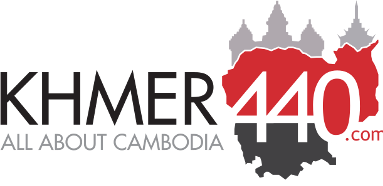Cambodia’s Long Journey Towards ‘Relative’ Normality
 Modern residency units in Phnom Penh now come in a variety of shapes and sizes and prices, but back in the early 1990s when UNTAC invaded town, it rapidly became apparent that there weren’t many units available that any foreigners would be interested in, and prices for the small amount of accommodation suitable for Westerners shot up to a sky high level, generally only found outside of the developed world in boom towns.
Modern residency units in Phnom Penh now come in a variety of shapes and sizes and prices, but back in the early 1990s when UNTAC invaded town, it rapidly became apparent that there weren’t many units available that any foreigners would be interested in, and prices for the small amount of accommodation suitable for Westerners shot up to a sky high level, generally only found outside of the developed world in boom towns.
In fact, there was a huge boom going on with millions, and eventually billions of dollars, pouring into a country that had been under an embargo until a couple of years before. In fact, anyone who was in possession of an old French period building, a few decent shop-houses, a Sangkum Reastre era concrete villa or even a wooden traditional house with a decent compound could ask whatever price they liked. And did.
In addition, the giant numbers of staff that came along with the mission, whether African or European troops on $120 a day plus per diem danger money or high-level staff indulging in five star dining and enjoying plenty of lucrative junkets, had wheelbarrows full of money to spend.
It wasn’t long before mission reports started coming out about UN armored cars seen overturned in front of brothels, peacekeepers getting involved in human trafficking and other unsavory activities. At the same time, these soldiers, other UN staffers and journalists and last but not least the Chinese businessmen who had flocked to Cambodia once it started opening all had to eat somewhere, so lots of new places opened to cater to the throng.
The crazy goldrush had to end of course, and when the UN pulled out in 1993 after the “successful” elections, leaving a still very fractured country with a serious (and seriously backed) insurgency behind, things changed.
At first the country was a left field, edgy and somewhat expensive destination for the more adventurous travelers as Cambodia suddenly seemed like a viable destination again so tourists started to stream in, many blissfully unaware of just how heavy the situation still was. Unfortunately but inevitably, a couple of northern Europeans were shot dead on their way out west and a mixed bunch who’d ignored advice and caught a train south were kidnapped and murdered by Pol Pot’s forces who hadn’t just disappeared after UNTAC but had instead grown stronger built up and pushed into previously un-held areas all over the provinces.
As a consequence, these unfortunate incidents put the country way off the route for most tourists for years to come, and earned the capital and outlying provinces a deserved reputation for high levels of robbery, unofficial roadblocks and general lawlessness. What didn’t help much either was the fact that many of the local sellers and traders hadn’t noticed that they were no longer dealing with junket guzzling UN types anymore, but instead were now dealing with tourists and travelers who expected similar costs to those in surrounding and far more peaceful countries.
So Cambodia was now both expensive and dangerous; nevertheless, business continued to to pick up and by 1996 with a fresh amnesty brewing in the west, all looked bright again as the tourists flocked in. However, the political turmoil and violence of the following year’s coup once again put the country again off-route for most. It was only after the death of Pol Pot in 1998 and the transfer of his last loyal troops to the RCAF that peace finally came again to the country and by 1999 the country had finally managed to lose its war status and stigma.
It took a bit longer, however, to reign in all the local commanders who ran lucrative road-blocks, and it’s still an ongoing process in places, but security has overall improved immensely, and one can now expect to drive anywhere without being pulled over and extorted from. At times it was just a poor guy with a plank making a human-bridge with his own body and allowing your pick-up to traverse a small ravine that you’d otherwise get stuck in and perhaps these guys dug the ravines themselves just as a scam, but with the general state of the roads that didn’t seem apparent; they just hung around at the worst parts of the rollercoaster. Anyway they seemed to give some value for money, unlike the “security” who demanded money just for blocking the road every time anyone wanted to drive past. Gradually all these rogue elements in the security forces were reigned in to gradually deliver us to the ‘relatively’ normal situation we live in today.
Dermot Sheehan




It is very rare to find educated people within this topic, you be understood as you no doubt know what you are posting on! Thanks